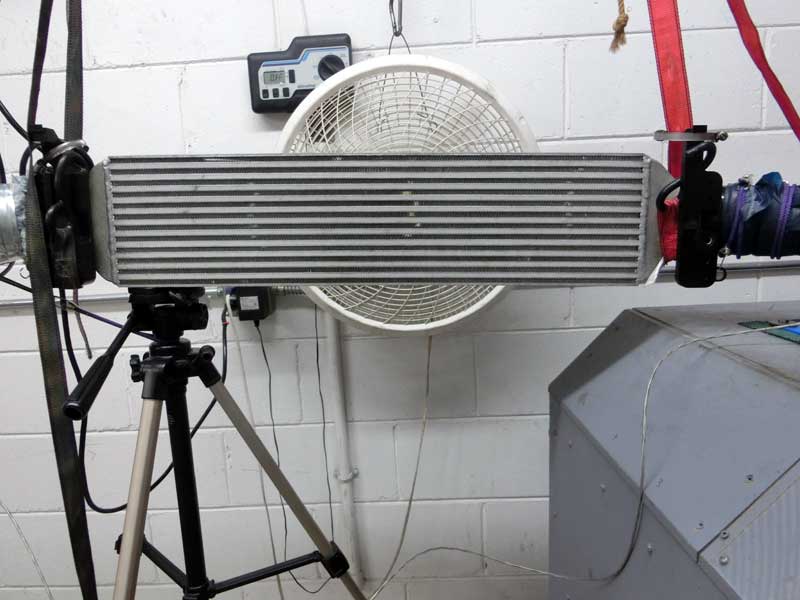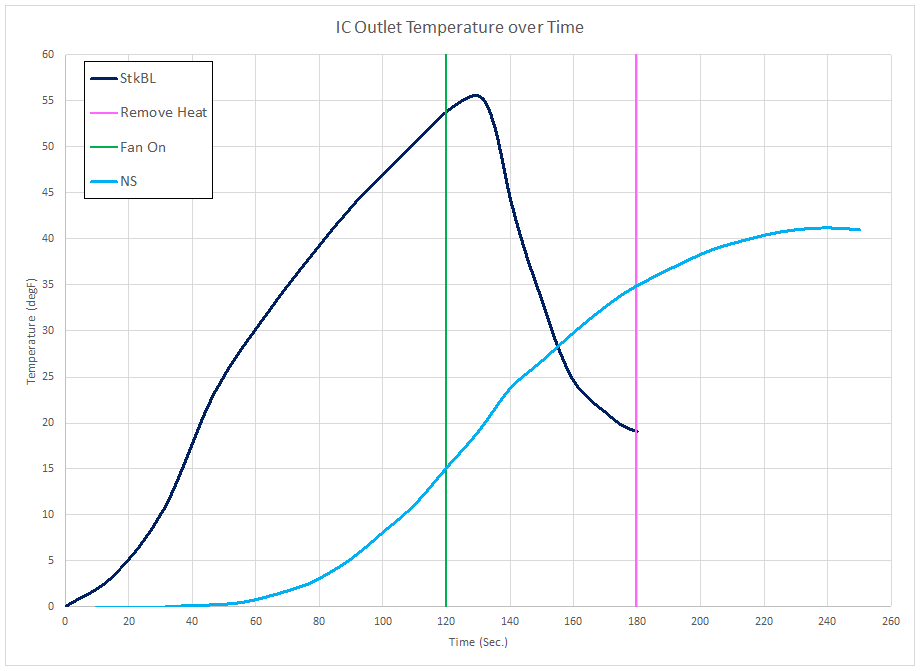Background:
A bench cooling efficiency test is one of several tests that can be applied to an intercooler when I get the opportunity. With a Neuspeed FMIC for the GTI /R available to me an airflow test was performed to confirm previous results, and now the bench cooling test is being conducted.

Test Procedure:
Previously details about the bench cooling efficiency test were described. Briefly recapping, a controlled hot air source delivers air through the intercooler with a temperature probe positioned at the outlet to record the conditioned air temperature. Airflow rate is controlled by a flow bench. After heating for two minutes a cooling fan is turned on and ambient air is blown across the cooling fins of the intercooler.

At three minutes time the hot air source is removed. The outlet temperature is recorded for the duration of the test.
Test Results:
The Neuspeed outlet air temperature varied as shown in the chart. Also shown is the stock GTI intercooler measurements.

Test results from the Majesty bicooler, Vibrant 12810 FMIC, ARM Motorsport FMIC, and PTE FMIC are added and shown on the next chart:

Combining the bench airflow and bench cooling results produces the following composite chart:

Conclusion:
Testing the Neuspeed on the bench for cooling efficiency reminded me of the Anger character from the movie Inside Out.

It hung with the larger Vibrant and ARM Motorsports ICs for about the first minute and a half keeping the outlet air temperature under 5 degF over ambient. Then it started to warm up, and once that happens the outlet temperature rose more rapidly than the other FMICs. (Other than the PTE which is unique among the products tested in that it heats relatively quickly but begins cooling with the heat source still active.)
Turning the cooling fan on has a slight affect on slowing the rise rate. The time elapsed to show a downward trend is on par with the Vibrant FMIC.
The Neuspeed cools well for the size for short duration at the expense of airflow.
Note: Cooling and airflow results from bench testing conditions don’t necessarily correlate to results under operating conditions. Airflow has previously been shown to correlate well to operating pressure drop, but it is unknown how cooling results from the bench would compare with results on the road.
